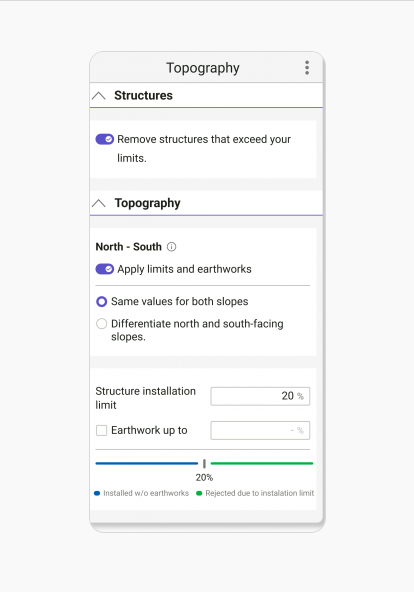The growing interest in battery energy storage systems (BESS) is reshaping energy management and driving new market opportunities. This technology relieves congestion and strengthens grid resilience in the face of growing demand for clean energy. For solar professionals — PV plant designers, engineers and investors — it also creates new ways to improve project performance and returns.

BESS adoption is surging around the world. As a result of lower costs and advancements in battery technology, BESS has become a viable solution for minimizing grid disruptions and maximizing PV plant profitability.
Renewables now account for more than 40% of electricity consumption in the European Union, with stationary BESS taking center stage. The U.S. also saw a surge in large-scale BESS projects in the second quarter of 2024. The country hit a new record with more than 3 gigawatts (GW) of new BESS capacity installed — a 59% increase compared to the same quarter in 2023. California, Arizona and Texas led the deployment, contributing 85% of this growth.
Breakthroughs in battery manufacturing have also lowered production expenses. Recent advancements can store more energy in a smaller space, making BESS systems more efficient and affordable. Falling raw material prices and intense market competition are reducing costs even further.
Concurrently, the growing penetration of inherently intermittent sun and wind power is causing volatility that makes storage solutions more viable and shortens the payback period for BESS investments. Daytime surpluses from peak solar production cause prices to plummet, while evening demand spikes send them soaring. BESS can create profitable trading opportunities in both scenarios — it can store energy when prices are low and release it when prices peak.
This combination of rising revenue potential and decreasing costs has substantially improved ROI for BESS projects.

Concurrently, the growing penetration of inherently intermittent sun and wind power is causing volatility that makes storage solutions more viable and shortens the payback period for BESS investments. Daytime surpluses from peak solar production cause prices to plummet, while evening demand spikes send them soaring. BESS can create profitable trading opportunities in both scenarios — it can store energy when prices are low and release it when prices peak.
This combination of rising revenue potential and decreasing costs has substantially improved ROI for BESS projects.
While the BESS segment’s apparent growth is promising, several issues continue to impede widespread market penetration. The industry must focus on the following key areas to encourage faster adoption:
Prices have declined modestly in recent years, but upfront costs remain high. The solar sector must champion continuous advancements in manufacturing and cost-lowering technologies to drive down battery and storage infrastructure prices.
Insufficient R&D investment is stifling innovation. Both private and public stakeholders must increase funding to push battery technology further, particularly in improving system performance and lifespan.
Sustainability issues continue to threaten the BESS industry’s long-term viability. PV manufacturers need to switch to responsible raw material sourcing and ethical procurement to reduce their environmental impact.
Regulatory uncertainty and complexity create barriers to investment. The sector needs well-defined and consistent regulations — clear policies to streamline permitting and reduce project risk. Governments must formulate frameworks that make investing in BESS more appealing.
Limited financial incentives and access to capital also hinder the viability of many BESS projects. Government support can accelerate innovations in grid technologies and help scale up deployment.
On a technical level, solar developers must find better ways to balance storage capacity with expected returns to achieve profitability. This means sizing BESS systems correctly in the early stages — a complex aspect of project design that demands detailed feasibility studies and accurate analysis.

To address this challenge, Enverus has introduced several key updates to its platform. Let’s explore how these new features streamline BESS configurations to help PV plant and BESS developers improve project outcomes.
Design hybrid plants that integrate AC-coupled BESS with solar PV systems and effectively plan for excess energy storage to increase your project’s overall value. Data since 2022 shows that hybrid plants have made up around 10-13% of simulations on the Enverus platform. Countries such as Indonesia, Chile, Mexico, Australia, the U.S. and the UK have comparatively more hybrid simulations than other countries, between 22% and 36%.
Seamlessly integrate AC- or DC-coupled BESS systems into your plans. Choose from a pre-populated library of industry-standard BESS components or easily import your preferred equipment specifications using .ond files. This flexibility allows you to evaluate production and cost estimates for various configurations and select the most efficient setup for your projects.
Since it was introduced, DC BESS has taken up around 22% of hybrid simulations, a trend that translates across most regions.
Enverus users can design and model BESS projects independently of solar PV installations. The tool automates key processes, including battery area characterization, earthworks calculation and system sizing. Here’s how it resolves common issues in BESS planning:
Developers often need to refer to manufacturer datasheets to configure standalone BESS projects. With Enverus, you can quickly align your BESS plant’s capacity with your manufacturer’s specifications and define battery container size, inverter capacity and supply hours.
Reconstructing manufacturer-supplied layouts accurately can be time consuming. With Enverus, you can easily replicate your manufacturer’s battery layout by defining container dimensions and distances in just a few clicks. The platform lets you adjust container and PCS dimensions and spacing.
Creating BESS elements manually in AutoCAD can be long-winded and error-prone. In the Enverus platform, you can automatically generate BESS elements to eliminate manual design tasks while saving time and reducing errors. It generates plant components based on user requirements.
Developers know the number of batteries needed but can struggle with precise layouts. Users can generate accurate layouts within seconds, including dimensions and power requirements. Enverus accounts for dimensions, distances and power requirements to generate layouts automatically.

Developers want to know the maximum number of batteries that can fit within their available land because efficient battery placement directly impacts profitability. Use the Enverus platform to quickly calculate the maximum number of batteries that fit within your site’s constraints. It optimizes layouts based on land size, grid requirements and system efficiency to squeeze more capacity from your space.
Calculating the necessary earthworks for a BESS project requires precise topographic surveys and geotechnical investigations. Enverus retrieves detailed topography data and automates earthworks calculations to use your land efficiently.
Meeting electrical standards when sizing cables can be complex. Enverus supports cable sizing based on various international standards, making it easy to select cables that conform to relevant industry standards for your BESS facility.
Grid operators may require developers to compensate for reactive power, which can complicate BESS sizing. Enverus software calculates the required power factor at the inverter level, making it easier to automatically compute and adjust it to meet grid operator standards.
Developers are regularly required to provide internal teams and stakeholders with detailed reports. Access a comprehensive library of editable reports and layouts to share with your team. Enverus generates more than 400 technical documents, including design reports, SLDs and layouts.
Developers often need to add more detail to layouts in AutoCAD. Export your complete BESS plant layout for further customization using external design tools. The Enverus platform exports layouts in DXF format for easy use with AutoCAD.
To fit alongside the Standalone BESS feature, BESS Arbitrage was released. With this new update, the platform can now calculate ideal charge and discharge levels based on degradation, PV production, energy prices and other key factors to optimize financial performance. Here’s how to use it to improve your project’s profitability:
Developers often need to recover losses from PV curtailment. Enverus calculates BESS charging strategies that factor in curtailment events. This automatic optimization helps you maximize energy utilization and minimize curtailment losses, improving your project’s efficiency and saving you time.
Developers want to quickly find the most efficient BESS charge and discharge cycles to capitalize on price fluctuations. Based on an arbitrage strategy, Enverus can automatically calculate optimal BESS charge and discharge cycles. Upload custom hourly pricing data to accurately model real-world energy market conditions and determine the most profitable times to charge and discharge your battery system.
Developers need to account for battery degradation over time to accurately predict long-term project revenue and ensure financial viability. On the Enverus platform, you can specify annual degradation values, daily cycles and depth of discharge. This allows you to model the impact of battery degradation on project performance accurately.
Developers need to know the financial feasibility of their BESS strategy to secure funding. The platform can instantly calculate your project’s LCOE and financial KPIs to help you make data-driven decisions and win investor confidence.
BESS technology has become essential for ensuring grid stability and capturing value from volatile energy markets. Projects that fail to incorporate storage solutions risk falling behind in both efficiency and profitability.
The platform’s BESS feature positions users to capture more opportunities in a competitive energy market. It automates complex processes and provides detailed financial insights to accelerate project timelines. Offering both hybrid and standalone storage options, our platform empowers solar designers to boost their project’s energy capacity and profitability while tackling rising energy demands head on.
Take a product tour to create your BESS project independently from a PV plant with Enverus! From location, BESS requirements, grid point and electrical configurations, you’ll have your design ready in just a few clicks.
People, process and technology for E&P innovators looking to disrupt the old and usher in the future of energy.
Read More About our E&P Solutions
Respond faster to rig and activity trends with real-time GPS and satellite telemetry data analytics.
Read More About Activity Analytics
An essential set of O&G data analytics. Redeploy your team’s bandwidth to higher value analysis and strategy with clean analytics-ready data sets.
Read More About Foundations
Track activity in near-real time to get the most recent and actionable insights on operators, leases, rigs, permits and more across the industry.
Read More About Oilfield Services
Technical research, publications and direct access to industry experts that leverage today’s most advanced analytics and technology to deliver independent, third-party insight into oil and gas, power, liquefied natural gas and renewables.
Read More About Intelligence